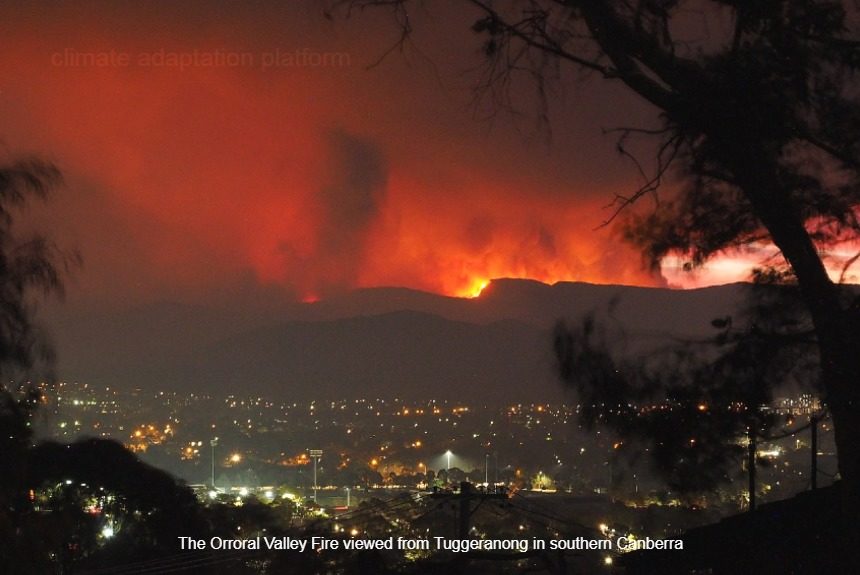The Australian bushfires this year have become a serious global concern because of their severity and the scale of their damage and impacts on people, animals, ecosystems, properties, and the land itself.
Bushfires are a seasonal event in Australia and can even be beneficial to ecosystems if managed and controlled—a practice that Indigenous Australians have used for many years. However, this year, the issue has gone out of proportion, even though scientists have taken climate change into account.
What was the climate in Australia in 2019?
To gain a clearer understanding of the factors contributing to this year’s bushfires, the Australian government, through its Bureau of Meteorology, released its climate statement for 2019.
Annual climate statement (2020) summarises:
- 2019 is the warmest year on record, with a mean temperature of 1.52°C above average nationwide.
- There is a widespread record of warm temperatures throughout the year, with the occurrence of heatwaves in January and December.
- It is also the driest year on record, with rainfall 40 per cent below average.
- Droughts were particularly severe in New South Wales and southern Queensland.
- There’s been widespread severe fire weather throughout the year; the Forest Fire Danger Index has been the highest since 1950, and the strongest positive Indian Ocean Dipole (IOD) on record.
What is the Indian Ocean Dipole?
Indian Ocean sea surface temperature impacts rainfall and temperature patterns over Australia. Sustained differences in sea surface temperatures in the tropical western and eastern Indian Ocean are known as the Indian Ocean Dipole (IOD). It is the key driver of the climate in Australia and can significantly impact agriculture, as it coincides with the winter crop-growing season. It has 3 phases: neutral, positive, and negative (Indian Ocean Influences, 2020).
Indian Ocean Influences (2020) explains further:
- Neutral IOD is when water from the Pacific flows through Indonesia, keeping the Northwest seas of Australia warm. Air rises and falls on the western half of the Indian Ocean, blowing westerly winds along the equator. Temperatures are close to normal, hence there is little change in the Australian climate.
- Positive IOD occurs when westerly winds weaken in the equatorial region, warm water moves towards Africa, and cool water moves towards the east around Indonesia and just above the northwest of Australia, creating cooler-than-normal water in the east and warmer waters in the west. This creates less rain or moisture in northwest Australia, resulting in lower rainfall and higher temperatures over parts of Australia during winter and springtime.
- Negative IOD occurs when there is a strong westerly wind at the equator, allowing warmer waters to stay near Australia, warmer water in the east, and cooler water in the west. This results in more rainfall in the southern parts of Australia and more available moisture across the country.
- The Bureau of Meteorology records show that from 1960 to 2016, there have been 11 negative IODs and 10 positive IODs recorded, indicating an almost alternating pattern of negative and positive IODs every year.
What’s the connection between the Indian Ocean Dipole and Bushfires in Australia?
Global heating is supercharging an increasingly dangerous climate mechanism in the Indian Ocean, which has played a role in the Australian bushfires and floods in Africa, according to a Guardian article (Beaumont & Readfearn, 2019).
Scientists say that this year’s record Indian Ocean Dipole, particularly the strong positive IOD, will be a phenomenon that will reappear more regularly as sea temperature increases (Beaumont & Readfearn, 2019).
This, of course, means that the Australian climate of 2019 will likely recur, which implies more droughts, drier days, and an increased likelihood of extreme bushfires.
Australian climatologists also say that this year’s dipole is at least one of the contributing factors in the bushfires. Jonathan Pollock of Australia’s Bureau of Meteorology says that the dipole was among the strongest on record (Beaumont & Readfearn, 2019).
We believe that the Australian authorities are actively engaged in risk management of bushfire events, particularly in light of changing climate patterns.
Surely, climate adaptation strategies are needed to make life and existence sustainable in bushfire-prone areas of Australia.
Sources:
Fire. (2018). WWF Australia. Retrieved from https://www.wwf.org.au/what-we-do/species/fire#gs.w83ys7
Australia’s Climate in 2019. (2020, January 9). Annual climate statement 2019. Australian Government Bureau of Meteorology. Retrieved from http://www.bom.gov.au/climate/current/annual/aus/2019/#tabs=Maps
Indian Ocean influences on Australian climate. (2020). Australian Government Bureau of Meteorology. Retrieved from http://www.bom.gov.au/climate/iod/#tabs=Indian-Ocean-climate-drivers
Beaumont, P. & Readfearn, G. (2019, November 19). Global heating supercharging Indian Ocean climate system. The Guardian. Retrieved from https://www.theguardian.com/global-development/2019/nov/19/global-heating-supercharging-indian-ocean-dipole-climate-system
PHOTO CREDIT: By Nick-D – Own work, CC BY-SA 4.0, Link



Leave a Reply